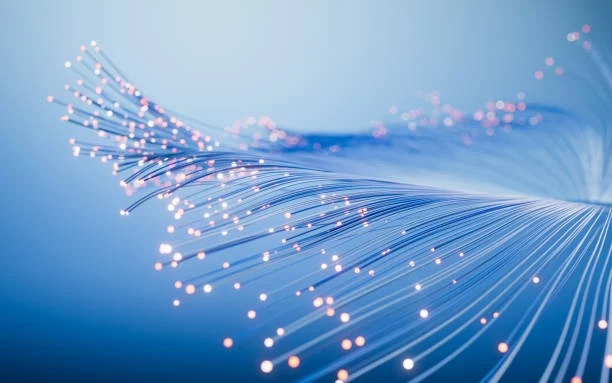The rapid pace of change in today’s world, from global video calls to cloud-based businesses, all depends on strong connectivity. Fiber-optic technology is driving this transformation, powering the digital future for individuals, businesses, and societies.
The Basics of Fiber Connectivity
Fiber connectivity refers to the use of fiber-optic cables, which transmit data using light rather than electrical signals. This may sound simple, but it is a radical departure from traditional copper wire connections. Fiber-optic cables are made from extremely thin strands of glass or plastic – thinner than a human hair. These cables carry data as pulses of light, allowing information to travel at incredible speeds and over long distances without significant loss of signal quality.
Why Fiber Connectivity Matters
The impact of fiber technology is evident through a few core advantages:
- Unmatched Speed
Fiber can deliver upload and download speeds that far surpass those of copper or wireless connections. Gigabit-speed internet is becoming standard in many places, making activities like 4K streaming, online gaming, and real-time collaboration seamless.
- Reliable Performance
Unlike older systems that degrade over distance or during peak usage hours, fiber is designed for consistency. This reliability is crucial for everything from remote work to e-learning and critical healthcare applications.
- Future-Proof Infrastructure
While bandwidth needs are constantly evolving, fiber networks can handle massive increases in demand. Once the physical infrastructure is laid, upgrades often only require changes to the equipment on either end, not the cables themselves.
Transforming Daily Life
Fiber connectivity isn’t just a technological leap; it’s reshaping the way people live and work.
Remote Work and Collaboration
The rapid shift toward hybrid and remote work would not be possible without high-performance internet. Video conferencing, cloud-based project management, and instant access to shared files rely on stable, high-bandwidth connections. Fiber eliminates the frustrations of lag, dropped calls, or slow downloads, so teams can work together no matter where they are in the world.
Education and E-Learning
Schools, universities, and online learning platforms increasingly depend on video lessons, interactive coursework, and virtual classrooms. Fiber connections make these accessible and smooth, supporting students and educators in ways that were not possible a few years ago. This is particularly important in rural and underserved communities where traditional infrastructure fails to deliver reliable access.
Home Entertainment and Smart Living
Streaming ultra-high-definition movies, gaming, smart home devices, and virtual reality experiences all require large volumes of data. Fiber can handle multiple simultaneous data demands, giving every member of a household a seamless experience even at peak times.
Fiber’s Impact on Business and Industry
Cloud Computing and Data-Driven Operations
Businesses are moving more operations to the cloud, relying on remote servers for storage, analytics, and application hosting. Fiber’s high speeds make uploading, backing up, and accessing vast datasets virtually instantaneous. This enables companies to leverage big data and artificial intelligence to drive better decision-making, streamline operations, and innovate faster.
Empowering Startups and Entrepreneurs
For startups and small businesses, access to fast, reliable internet levels the playing field. Fiber allows them to benefit from advanced tools and services that were previously limited to larger enterprises. It opens the doors to global customers, remote talent, and new markets.
Revolutionizing Healthcare
Telemedicine, cloud-based health records, real-time diagnostic tools, and remote patient monitoring require secure, high-speed connections. Fiber supports these advancements, making healthcare more efficient and accessible, especially in remote or underserved areas.
Supporting Smart Cities
Cities are deploying fiber networks and distributed antenna systems to power smart traffic lights, surveillance systems, utility grids, and emergency response systems. These improvements make urban areas safer, greener, and more responsive to the needs of their residents.
Bridging the Digital Divide
As fiber connectivity expands, it also plays a key role in bridging the digital divide between urban and rural areas. High-speed internet is no longer a luxury but a necessity for education, employment, and participation in the digital economy. Fiber rollouts in rural regions give families access to opportunities and services previously out of reach.
Challenges and the Road Ahead
Despite its clear advantages, expanding fiber infrastructure comes with challenges. Installation costs, the need for skilled labor, navigating local regulations, and investing in rural deployment are all hurdles. However, public and private partnerships are making progress, recognizing that digital connectivity underpins economic growth and social inclusion.
Looking to the Future
The world is only beginning to tap into fiber’s full potential. With 5G rollout, autonomous cars, the Internet of Things (IoT), and the continued rise of data-heavy applications, the demand for ultra-fast and reliable connectivity will only grow.
For consumers, this means smoother online experiences, access to new ways of learning and working, and smarter homes. For businesses and economies, fiber unlocks innovation and competitiveness on a global scale.
Conclusion
Fiber connectivity is far more than just “faster internet.” It is the backbone enabling today’s digital innovations and tomorrow’s breakthroughs. Whether you’re streaming your favorite series, launching a business, or managing critical infrastructure, fiber gives you the speed, reliability, and scope to connect and succeed.

Lexy Summer is a talented writer with a deep passion for the art of language and storytelling. With a background in editing and content creation, Lexy has honed her skills in crafting clear, engaging, and grammatically flawless writing.



